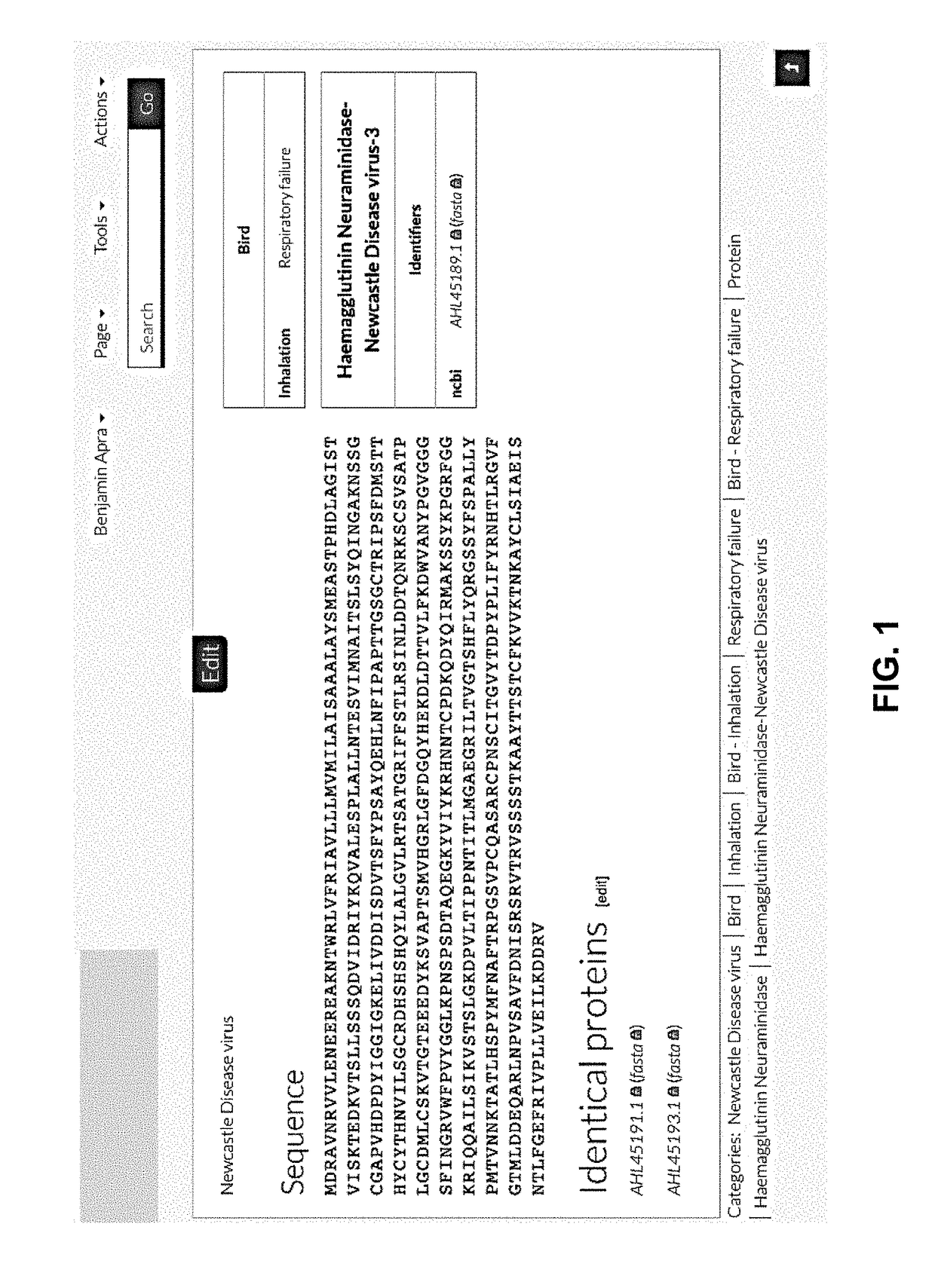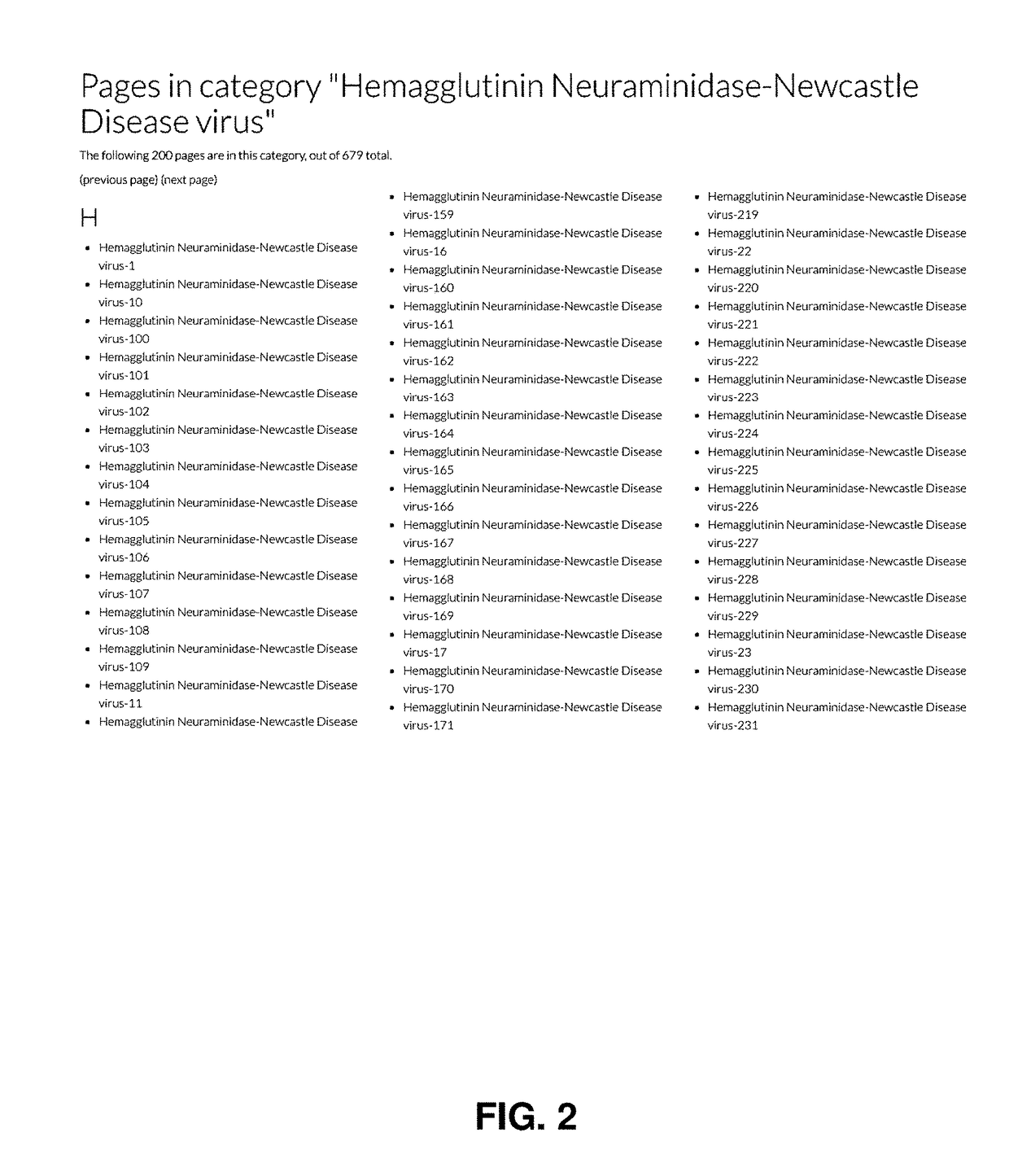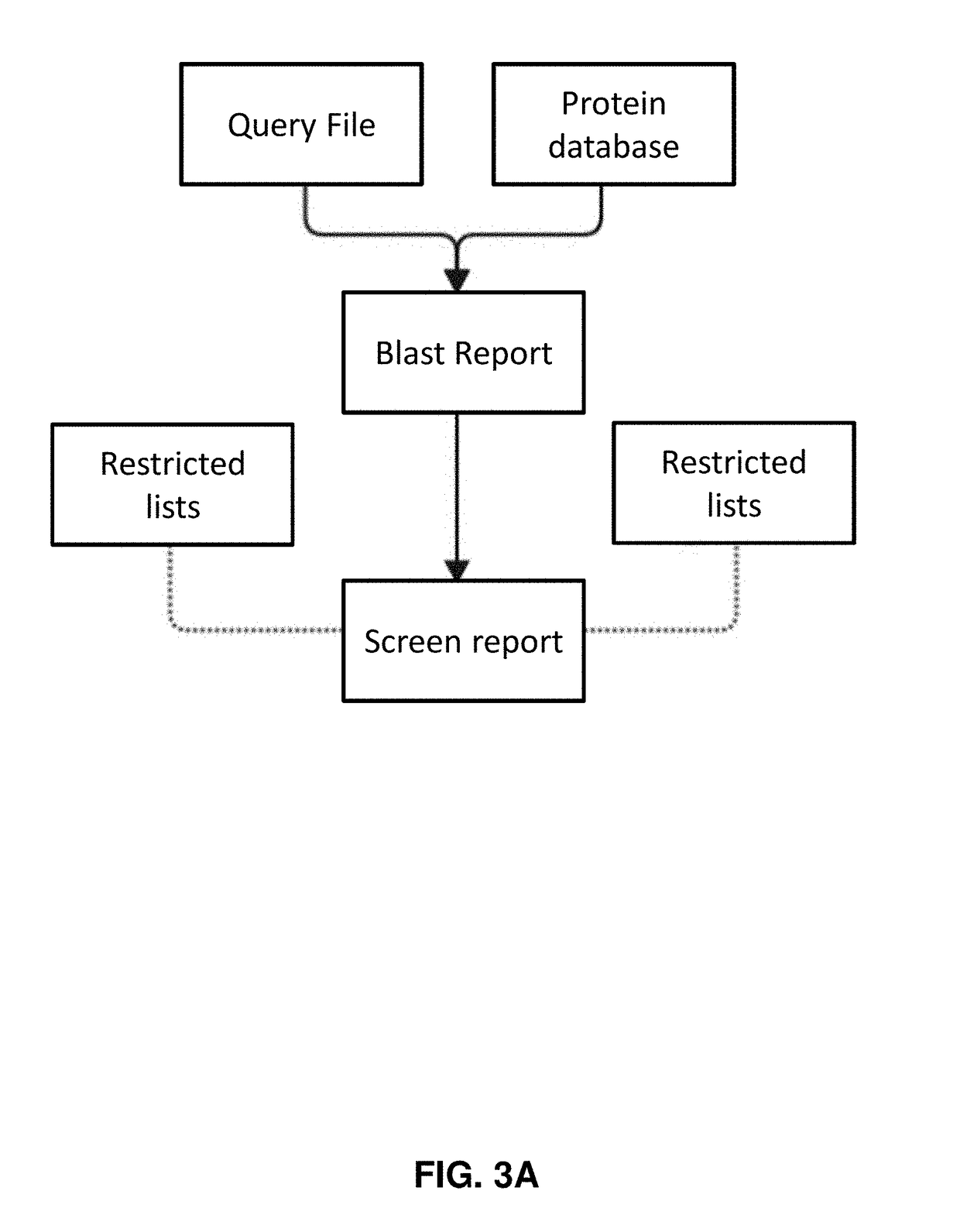Systems and methods for automated annotation and screening of biological sequences
- Summary
- Abstract
- Description
- Claims
- Application Information
AI Technical Summary
Benefits of technology
Problems solved by technology
Method used
Image
Examples
example 1
[0088]A biological sequence was received by a processor unit. In this example, the biological sequence is a protein sequence. The processor unit accessed a protein database and identified a protein sequence matching the received protein sequence. The processor unit received information associated with various characteristics of the protein sequence. Characteristics included: nucleic acid sequence associated with the protein sequence, the protein sequence, protein name, strain source information, link to sequence database (e.g., NCBI), sequence database accession number, identical sequences (protein or nucleic acid), similar sequences (protein or nucleic acid), disease source (e.g., virus, bacterium), taxonomic description of the organism (e.g., kingdom, phylum, class, order, family, genus, species), host information (e.g., humans, mammals, birds, insects), context or route of harmful interaction (e.g., ingestion, inhalation), a symptom, and level of concern. In this Exampl...
example 2
Screening
[0091]Referring to FIG. 3A, a processor received machine instructions in the form of query file containing biological sequence information, in this case nucleic acid information. The processor was also in communication with nucleic acid and protein databases. The processor accessed the nucleic acid and protein databases. A BLAST processed report was generated listing the same and similar sequences identified as associated with the queried biological sequence, in-part or whole. Sequences from the BLAST processed report were then queried to databases containing sequence annotations identifying sequences associated with harmful biological sequences (protein or nucleic acids), also referred to as “restricted” lists. A screen report was generated in the form of a user interface which summarizes the results of these processes. The screen report was transmitted in the form of machine instructions for a user interface. The processor received specific instructions for databases to a...
example 3
ning Against Specific Genomes
[0092]Access to more than 500 nucleotides of the genome of Variola major or minor is restricted by World Health Organization (WHO) policy. Those wanting longer sequences must apply for and be granted permission by WHO prior to synthesis. Because of the unique nature of Variola, a pre-screening against just the genomes of Variola major and Variola minor along with Vaccinia and other closely-related Orthopox viruses is conducted. A nucleic acid sequence was evaluated using the general biosecurity screening procedure of Example 2 and the genomes of Orthopox viruses. This screening was carried out in less than 1 second (via blastx on commodity hardware). Vaccinia and other orthopox reference sequences were included to make sure the homology of the requested sequence is greatest to Variola (akin to the 2010 HHS guidance ‘best match’ criteria) prior to alerting.
[0093]This could be performed optionally during an order quote-generation process where, if a harmfu...
PUM
| Property | Measurement | Unit |
|---|---|---|
| Fraction | aaaaa | aaaaa |
| Length | aaaaa | aaaaa |
| Time | aaaaa | aaaaa |
Abstract
Description
Claims
Application Information
 Login to View More
Login to View More - R&D
- Intellectual Property
- Life Sciences
- Materials
- Tech Scout
- Unparalleled Data Quality
- Higher Quality Content
- 60% Fewer Hallucinations
Browse by: Latest US Patents, China's latest patents, Technical Efficacy Thesaurus, Application Domain, Technology Topic, Popular Technical Reports.
© 2025 PatSnap. All rights reserved.Legal|Privacy policy|Modern Slavery Act Transparency Statement|Sitemap|About US| Contact US: help@patsnap.com



